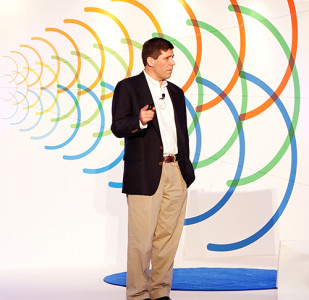SIX STEPS TO A CLUMPIER CONSUMER
Wharton Professor Eric Bradlow unveils a new metric for marketers to determine customer lifetime value.

Professor Eric Bradlow, W’88, HOM’00, shares an epiphany from his latest marketing analytics research: how one data point could help marketers better identify their customers with the most promising customer lifetime value (CLV).
It’s called “clumpiness”—a measurement of how binge-y a shopper is. Clumpy shoppers—those that shop in spurts comparable to the behavior of binge drinkers and binge sleepers—are more valuable in the long run than nonclumpy shoppers, according to data collected by Bradlow, who serves as Wharton’s K.P. Chao Professor, vice dean and director of Wharton Doctoral Programs, and co-director of the Wharton Customer Analytics Initiative.
Your options are to watch the full webinar to gain a greater understanding of clumpiness, or read our six takeaways, presented below.
Better yet, you could do both—read this blog and watch the full webinar.
1. Does clumpiness apply to business-to-business customers? “I have no empirical proof,” Bradlow told his remote webinar audience. “I am willing to bet a lot of money that clumpy B2B is worth more in the future,” he said, adding that if any B2B marketers would like to share their data sets, he would be happy to test his hypothesis on them.
2. Bradlow will offer links to the two research papers that explain his new finding, as well as an Excel spreadsheet to demonstrate how to measure the clumpiness of your customers, on his Wharton homepage .
3. Digital consumers seem to behave more clumpily. In his analysis, 40 to 50 percent of Hulu, YouTube, Amazon and eBay customers are clumpy. Shoppers of traditional products—like toilet paper, for instance—tend not to be clumpy.

Prof. Eric Bradlow
4. There are two types of clumpy—visit clumpiness and purchase clumpiness. Shoppers who are visit clumpy are not necessarily purchase clumpy and are thus not necessarily more valuable. Purchase- clumpy shoppers tend to have that long-term value.
5. Female shoppers, younger shoppers under 30, loyalty program members and customers with wish lists tend to be clumpier.
6. The traditional framework of CLV and customer segmentation is RFM: recency, frequency and monetary value. This framework is lacking without a fourth attribute: C for clumpiness.
For others—and those Wharton community members who want as much of Bradlow as they can get—please watch the video below of Bradlow’s Wharton Lifelong Learning master class on “mining for gold in marketing.”
View at the original source
No comments:
Post a Comment